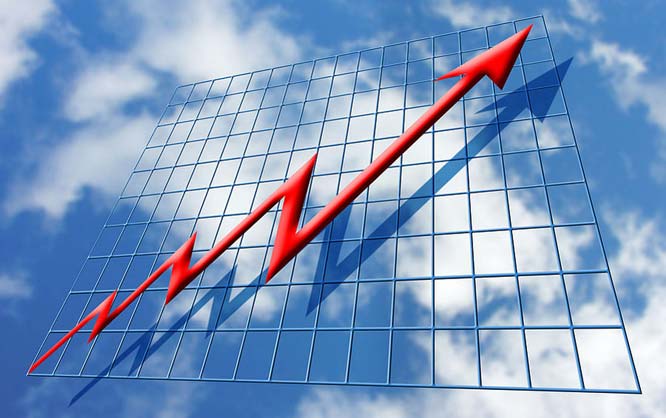
Come June, it will be eight years since the end of the longest and deepest economic downturn since the Great Depression. Yet we are still feeling its effects. There remains, for example, a shortage of what John Maynard Keynes called animal spirits--the risk-taking that greases an economy's gears. Business start-ups are still down by one-fourth from their 2006 peak. Growth has not recovered to anything close to traditional levels. In the seven full years since the recession ended, gross domestic product has increased by an average of just 2.1% annually, about one-third less than the post-World War II norm.
In 2009,
That said, the new normal hasn't been all that miserable. To mitigate the dangers of a rickety banking system, reluctant businesses and unenthusiastic consumers, the
Mixed impact. Now, we're headed back to the old normal. For the economy, it will be better. For investors, it could be worse. But don't despair. You can still thrive.
The reason for the return to the old normal is simple:
During the financial crisis, the Fed dropped its primary short-term interest rate from 5.25% to 0.25% and kept it there for seven years. At the end of 2015, the Fed raised the rate by one-fourth of a percentage point, and it has since hiked it twice more. The rate is now about 1%, and the Fed has indicated that more increases are coming.
Thanks to these extraordinary actions, says Yellen, the economy appears ready to grow at a more normal pace without the Fed having to keep "pressing on the gas pedal." The old normal means that economic expansions alternate with contractions. At the start of an expansion, interest rates are low (though not at rock bottom). Businesses and consumers borrow, invest and buy. As activity increases, the Fed grows worried about the economy overheating and inflation accelerating, so it hikes rates--often sharply. These higher rates deter borrowing, investing and buying, and growth declines. A bear market materializes, often signaling a recession.
If we are indeed back to the old normal, we are just beginning the upward part of the cycle. We can expect to see economic growth and inflation increase, and, at some point, the Fed will raise rates dramatically. Just before the 2001 recession, the Fed boosted its key short-term rate to 6.5%; before the 1990 recession, it hiked it to nearly 10%.
Investors need to readapt themselves to the old normal. Start by examining your portfolio. If you have invested in stocks in recent years, you have probably done well. Imagine you started 2011 with $100,000 in Vanguard 500 Index Admiral (symbol VFIAX) which tracks
Also, in a time of rising rates, be sure to ladder your bonds so that they mature in sequence, year after year. That way, if rates rise, you can invest the proceeds from lower-yielding bonds as they mature into new, higher-yielding bonds. Or, for better diversification, you can purchase a series of funds whose portfolios are composed of bonds that mature in a single year, such as
Assume also that the old rules apply for stock investing: Diversify and hold for the long haul. I have a penchant for shares that have lagged the market. A good example is the Dow itself, which over the past five years has trailed the S&P by an average of one percentage point per year. You can buy the 30-stock Dow portfolio through
I expect that as real recovery finally comes to the
Speaking of energy, I expect that sector to come back. A barrel of oil at $50 is just not normal. A good way to buy oil and gas is through Vanguard Energy (VGENX), a mutual fund managed by real people (not algorithms) that has outpaced the average fund in its category in six of the past seven calendar years (including so far in 2017). Among its top holdings are Schlumberger (SLB, $78), the services company, whose shares are down by one-third from their five-year high, and such integrated energy companies as
Finally, we have financial-services companies. Banks benefit from rising rates because, typically, the spreads widen between the short-term rates at which banks borrow and the long-term rates at which they lend. Insurance companies win, too, because they can invest the premiums they collect in bonds with higher yields. Some financials have performed well lately, notably the large banks, such as
The best strategy is to own a broad portfolio such as
I'll end with a key lesson from old-normal history: Unlike what occurred during the new normal, stocks will eventually fall. That's when you'll face your toughest task. You will have to stick with your stocks until the cycle starts moving up again. It always does.
Comment by clicking here.
James K. Glassman, a contributing columnist at Kiplinger's Personal Finance magazine, is, a visiting fellow at the American Enterprise Institute and the author, most recently, of Safety Net: The Strategy of De-Risking Your Investments in a Time of Turbulence. He owns none of the stocks mentioned.


 Contact The Editor
Contact The Editor
 Articles By This Author
Articles By This Author